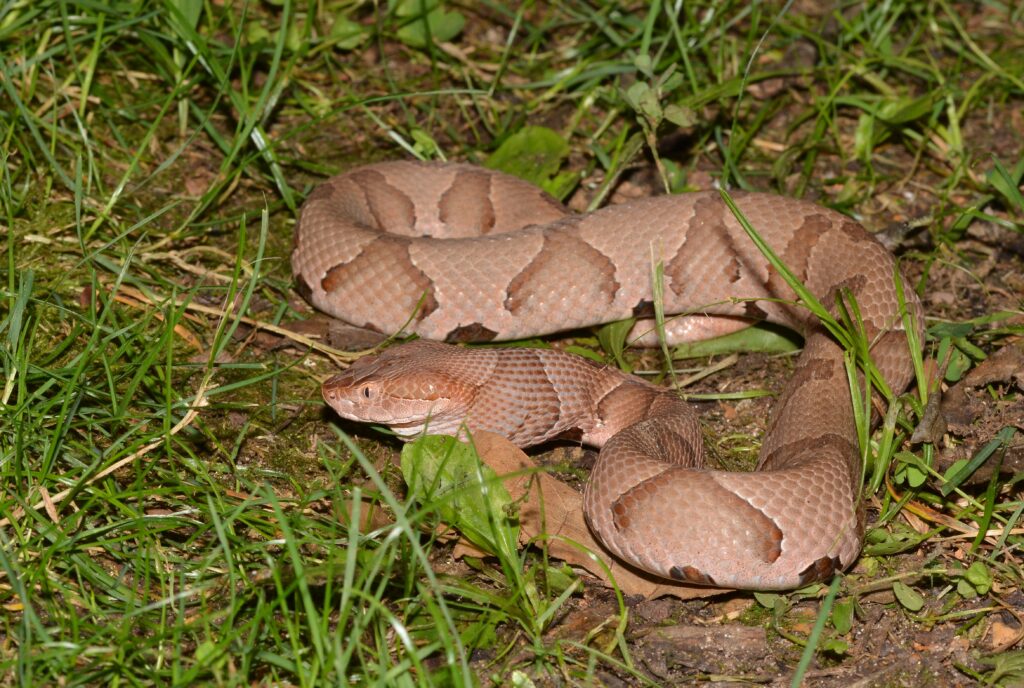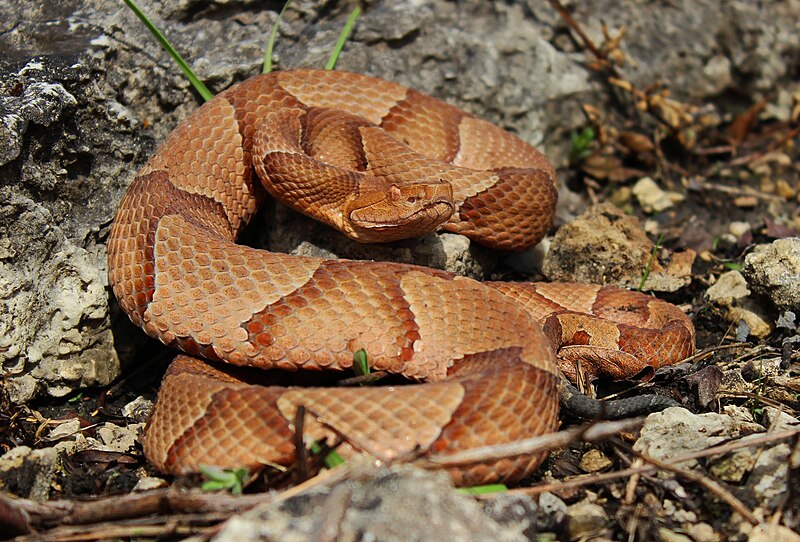Check for these tell-tale signs to stay safe!

Hey there, adventurer! Ever been out on a hike, soaking in the beauty of nature, when you suddenly spot something slithering across your path? Your heart skips a beat, and you wonder, “Is that snake dangerous?” We’ve all been there.
It’s a mix of excitement and a bit of panic. But fear not! I’m here to help you unravel the mystery of how to tell if a snake is venomous.
In this guide, we’re diving deep into the world of snakes, busting myths, and giving you the lowdown on spotting the dangerous ones. Spoiler alert: It’s not just about the color! Whether you’re a seasoned hiker, a curious learner, or someone who just loves nature, by the end of this article, you’ll have the know-how to confidently identify whether a snake is a friend or foe.
Stick with me, and I promise you’ll not only become the go-to snake expert among your friends but also feel a whole lot safer on your next outdoor adventure. Ready to become a snake-savvy superstar? Let’s slither right in!
Key Takeaways
- Learn the main physical traits of venomous snakes.
- Understand behavioral signs that indicate danger.
- Discover safety tips for when you encounter a snake.
Identifying Physical Traits
Alright, let’s get down to business. How exactly can you tell if a snake is venomous? Here are the main physical traits to look out for:
Head Shape
One of the easiest ways to identify a venomous snake is by its head shape. Most venomous snakes have a distinct triangular or diamond-shaped head. This is due to the venom glands located on either side of their heads. So, if you see a snake with a broad, angular head, it’s time to stay cautious.
Pupil Shape
Ever heard that the eyes are the windows to the soul? Well, in the case of snakes, they can also be windows to danger. Venomous snakes often have elliptical, slit-like pupils, much like a cat’s eyes. In contrast, non-venomous snakes typically have round pupils. Next time you’re face-to-face with a snake, check out its peepers!
Body Patterns
This one’s a bit trickier because it’s not a hard-and-fast rule, but many venomous snakes have distinct, bright patterns on their bodies. However, don’t rely solely on this. Some harmless snakes can be just as colorful, while some venomous ones are more subdued in color.
Presence of Fangs
venomous snakes have prominent fangs that they use to inject venom into their prey. If you can safely observe, look for those tell-tale fangs. But remember, getting too close is never a good idea unless you’re a trained professional.

Behavioral Signs
Alright, now that we’ve covered the physical traits, let’s talk about behavior. Snakes have their own way of communicating danger, and if you know what to look for, their behavior can be a dead giveaway.
Aggressiveness
Venomous snakes are often more aggressive when they feel threatened. If a snake is coiling up, hissing, or making sudden movements towards you, it’s likely not a happy camper. This defensive behavior is a clear sign that the snake could be dangerous. Always give it plenty of space to avoid any unpleasant encounters.
Warning Signals
Some venomous snakes have built-in alarm systems. Take the rattlesnake, for instance. That iconic rattle isn’t just for show—it’s a warning to back off. Similarly, some snakes might flatten their bodies, puff up, or make loud hissing sounds. These warning signals are their way of saying, “Hey, stay away, I mean business!”
Movement
Watch the way the snake moves. Some venomous snakes, like the cottonmouth, have a unique way of swimming on the water’s surface with their bodies fully exposed. This distinctive movement can be a clue to their venomous nature. On land, a snake’s movement can also tell you a lot. If it seems overly confident and undeterred by your presence, it might be because it knows it has venomous backup.
Safety Tips When Encountering Snakes
Now that you’re well-versed in the physical and behavioral signs of venomous snakes, let’s talk about what to do if you actually encounter one. Here are some practical tips to keep you safe:
Keep Your Distance
This is the golden rule. The best way to stay safe is to maintain a respectful distance from any snake. Most snake bites occur when people try to handle or get too close to the snake.
Stay Calm
If you see a snake, don’t panic. Sudden movements can provoke a snake to strike. Take a deep breath, stay calm, and slowly back away from the snake.
Educate Yourself
Knowledge is power! Familiarize yourself with the types of snakes that are common in your area. Knowing what to expect can help you stay prepared and confident.
Emergency Preparedness
Know what to do in case of a snake bite. Quick and calm actions can make a huge difference. Keep a first aid kit handy and learn the basic steps of snake bite treatment. Remember, seeking professional medical help as soon as possible is crucial.
Myth-Busting: Common Misconceptions
Alright, let’s debunk some myths! There’s a lot of misinformation out there about snakes, and it’s time to set the record straight.
Color Confusion
Not all brightly colored snakes are venomous, and not all dull-colored snakes are safe. While some venomous snakes do have bright warning colors, many harmless snakes mimic these patterns to ward off predators. Don’t rely solely on color to make your judgment.
Size Matters
Think big snakes are more dangerous? Think again! Venomous snakes come in all sizes. Some of the most dangerous snakes can be quite small, so never judge a snake’s danger level by its size alone.
Snake Charms
Forget about those old wives’ tales and folklore. Stick to facts and evidence-based knowledge. For example, the idea that all venomous snakes have triangular heads is generally true but not foolproof. Always use a combination of traits to make your identification.
Conclusion
Next time you’re out exploring, you’ll be armed with the knowledge to stay safe and maybe even impress your friends with your snake smarts. Remember, when it comes to snakes, respect and caution are your best friends. Happy adventuring, and may your paths be snake-free—or at least, snake-savvy!














